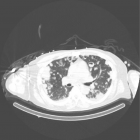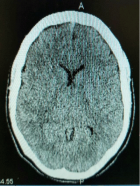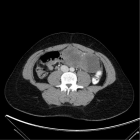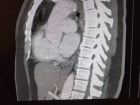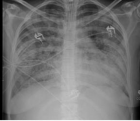Abstract
Research Article
Forensic analysis of raw meat adulteration using mtDNA
Marium Zehra*, Rukhsana Parveen, Muhammad Irfan, Mahrukh Nasir and Sidra Bashir
Published: 29 December, 2022 | Volume 6 - Issue 1 | Pages: 088-092
Meat species identification has become essential with the increasing events of frauds like the illegal slaughter of cows, meat adulteration, and substitution. Food scam directly influences public well-being, trade, and wildlife. In Pakistan, donkey meat is used as adulterants for cow meat and is considered Haram in Islamic concepts. In this study PCR, based detection methods are used for identification purposes. The mitochondrial gene cytochrome b has been used in this study to identify the origin of meat specie. Specie-specific primers of cyt b of cow and donkey were used for identification. DNA from different binary ratios of cow and donkey meat was extracted by the phenol-chloroform method. Ratios were made from 1-10 and extracted DNA was subjected to PCR to amplify the target fragment of the cyt b gene. Primers were sensitive to identifying species origin in all meat ratios. Multiplex PCR was designed to identify both species and the results were analyzed by gel electrophoresis. Fragment size of 309bp for cow and 475bp for donkey was observed.
Results of the current study conclude that PCR assays, including multiplex PCR, is efficient and has a high sensitivity for even small amount of meat. It is concluded that multiplex PCR is useful and reliable for adulterated meat detection.
Read Full Article HTML DOI: 10.29328/journal.jfsr.1001041 Cite this Article Read Full Article PDF
References
- Abidfaheem, T., Nayak, B. S., & Andrade, M. (2013). Food adulteration and family's knowledge on food adulteration in selected village of Udupi Taluk, Karnataka. Nitte University Journal of Health Science. 3(2): 33.
- Akhtar S, Randhawa M, Riaz M, Hameed A, Ismail T, Ismail A, Ali Z. Food safety conundrum: a Pakistan's scenario. Quality Assurance and Safety of Crops & Foods. 2014; 7(4): 559-567.
- Kartheek M, Smith AA, Muthu AK, Manavalan R. Determination of adulterants in food: a review. Journal of Chemical and Pharmaceutical Research. 2011; 3(2): 629-636.
- Hossain MAM, Uddin SMK, Sultana S, Bonny SQ, Khan MF, Chowdhury ZZ, Johan MR, Ali ME. Heptaplex Polymerase Chain Reaction Assay for the Simultaneous Detection of Beef, Buffalo, Chicken, Cat, Dog, Pork, and Fish in Raw and Heat-Treated Food Products. J Agric Food Chem. 2019 Jul 24;67(29):8268-8278. doi: 10.1021/acs.jafc.9b02518. Epub 2019 Jul 16. PMID: 31283221.
- Stanciu S. Horse meat consumption− between scandal and reality. Procedia Economics and Finance. 23: 697-703.
- Trivedi DK, Hollywood KA, Rattray NJ, Ward H, Trivedi DK, Greenwood J, Ellis DI, Goodacre R. Meat, the metabolites: an integrated metabolite profiling and lipidomics approach for the detection of the adulteration of beef with pork. Analyst. 2016 Apr 7;141(7):2155-64. doi: 10.1039/c6an00108d. PMID: 26911805; PMCID: PMC4819684.
- Doosti A, Ghasemi Dehkordi P, Rahimi E. Molecular assay to fraud identification of meat products. J Food Sci Technol. 2014 Jan;51(1):148-52. doi: 10.1007/s13197-011-0456-3. Epub 2011 Jul 16. PMID: 24426061; PMCID: PMC3857419.
- Ali ME, Razzak MA, Hamid SB, Rahman MM, Amin MA, Rashid NR, Asing. Multiplex PCR assay for the detection of five meat species forbidden in Islamic foods. Food Chem. 2015 Jun 15;177:214-24. doi: 10.1016/j.foodchem.2014.12.098. Epub 2015 Jan 2. PMID: 25660879.
- Nakyinsige K, Man YB, Sazili AQ. Halal authenticity issues in meat and meat products. Meat Sci. 2012 Jul;91(3):207-14. doi: 10.1016/j.meatsci.2012.02.015. Epub 2012 Feb 22. PMID: 22405913.
- Ashwani K, Singh Y, Prasad G. Cytochrome-b gene-based PCR for identification and differentiation of cooked meat of sheep, goat, cattle, pig, and poultry. Haryana Veterinarian. 2009; 48: 53-57.
- Lin CC, Fung LL, Chan PK, Lee CM, Chow KF, Cheng SH. A rapid low-cost high-density DNA-based multi-detection test for routine inspection of meat species. Meat Sci. 2014 Feb;96(2 Pt A):922-9. doi: 10.1016/j.meatsci.2013.09.001. Epub 2013 Sep 8. PMID: 24211550.
- Sentandreu MÁ, Sentandreu E. The authenticity of meat products: Tools against fraud. Food Research International. 2014; 60: 19-29.
- Ballin NZ. Authentication of meat and meat products. Meat Science. 2010; 86(3): 577-587.
- El Sheikha AF, Mokhtar NFK, Amie C, Lamasudin DU, Isa NM, Mustafa S. Authentication technologies using DNA-based approaches for meats and halal meats determination. Food Biotechnology. 2017; 31(4): 281-315.
- Mousavi SM, Khaniki GJ, Eskandari S, Rabiei M, Samiee SM, Mehdizadeh M.. Applicability of species-specific polymerase chain reaction for fraud identification in raw ground meat commercially sold in Iran. Journal of Food Composition and Analysis. 2015; 40: 47-51.
- Montowska M, Pospiech E. Authenticity determination of meat and meat products on the protein and DNA basis. Food Reviews International. 2010; 27(1): 84-100.
- Barai B, Nayak R, Singhal R, Kulkarni P. Approaches to the detection of meat adulteration. Trends in Food Science & Technology. 1992; 3: 69-72.
- Hurley IP, Elyse Ireland H, Coleman RC, Williams JH. Application of immunological methods for the detection of species adulteration in dairy products. International Journal of Food Science Technology. 2004; 39(8): 873-878.
- Chou CC, Lin SP, Lee KM, Hsu CT, Vickroy TW, Zen JM. Fast differentiation of meats from fifteen animal species by liquid chromatography with electrochemical detection using copper nanoparticle plated electrodes. J Chromatogr B Analyt Technol Biomed Life Sci. 2007 Feb 1;846(1-2):230-9. doi: 10.1016/j.jchromb.2006.09.006. Epub 2006 Sep 27. PMID: 17008137.
- Chikuni K, Ozutsumi K, Koishikawa T, Kato S. Species identification of cooked meats by DNA hybridization assay. Meat Sci. 1990;27(2):119-28. doi: 10.1016/0309-1740(90)90060-J. PMID: 22055225.
- Rahmati S, Julkapli NM, Yehye WA, Basirun WJ. Identification of meat origin in food products–A review. Food Control. 2016; 68: 379-390.
- Aida AA, Che Man YB, Raha AR, Son R. Detection of pig derivatives in food products for halal uthentication by polymerase-chain-reaction–restriction fragment length polymorphism. Journal of the Science of Food and Agriculture. 2007; 87(4): 569-572.
- Wolf C, Rentsch J, Hübner P. PCR-RFLP analysis of mitochondrial DNA: a reliable method for species identification. J Agric Food Chem. 1999 Apr;47(4):1350-5. doi: 10.1021/jf9808426. PMID: 10563979.
- Murugaiah C, Noor ZM, Mastakim M, Bilung LM, Selamat J, Radu S. Meat species identification and Halal authentication analysis using mitochondrial DNA. Meat Sci. 2009 Sep;83(1):57-61. doi: 10.1016/j.meatsci.2009.03.015. Epub 2009 Apr 18. PMID: 20416658.
- Rastogi G, Dharne MS, Walujkar S, Kumar A, Patole MS, Shouche YS. Species identification and authentication of tissues of animal origin using mitochondrial and nuclear markers. Meat Sci. 2007 Aug;76(4):666-74. doi: 10.1016/j.meatsci.2007.02.006. Epub 2007 Feb 22. PMID: 22061243.
- Gajbe R, Banubakode S, Dalvi R, Kurkure N, Charjan R, Nandeshwar N, Rana J. Differentiation of meat species using species-specific repeat and PCR-RFLP technique.
- Broll H. New approaches for verifying food species and variety. In New analytical approaches for verifying the origin of food. Elsevier 2013: 81-93.
- Tauma J, Abdul-Hassan I. Identification of Some Meat Species Using PCR and Multiplex PCR of Mitochondrial Cytochrome B Gene. Iraqi Poultry Sciences Journal. 2014; 8(1): 1-9.
- Abbas O, Zadravec M, Baeten V, Mikuš T, Lešić T, Vulić A, Prpić J, Jemeršić L, Pleadin J. Analytical methods used for the authentication of food of animal origin. Food Chem. 2018 Apr 25;246:6-17. doi: 10.1016/j.foodchem.2017.11.007. Epub 2017 Nov 3. PMID: 29291879.
- Mane B, Mendiratta S, Tiwari A. Polymerase chain reaction assay for identification of chicken in meat and meat products. Food Chemistry. 2009; 116(3): 806-810.
- Jain S, Brahmbhatt M, Rank D, Joshi C, Solanki J. Use of cytochrome b gene variability in detecting meat species by multiplex PCR assay. Indian Journal of Animal Sciences. 2007; 77(9): 880.
Figures:

Figure 1
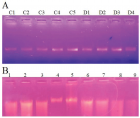
Figure 2

Figure 3

Figure 4
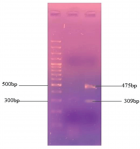
Figure 5
Similar Articles
-
Poly-dopamine-Beta-Cyclodextrin Modified Glassy Carbon Electrode as a Sensor for the Voltammetric Detection of L-Tryptophan at Physiological pHMohammad Hasanzadeh*,Nasrin Shadjou,Sattar Sadeghi,Ahad Mokhtarzadeh,Ayub karimzadeh. Poly-dopamine-Beta-Cyclodextrin Modified Glassy Carbon Electrode as a Sensor for the Voltammetric Detection of L-Tryptophan at Physiological pH . . 2017 doi: 10.29328/journal.jfsr.1001001; 1: 001-009
-
WMW: A Secure, Web based Middleware for C4I Interoperable ApplicationsNida Zeeshan*. WMW: A Secure, Web based Middleware for C4I Interoperable Applications. . 2017 doi: 10.29328/journal.jfsr.1001002; 1: 010-017
-
Associations of Burnout, Secondary Traumatic Stress and Individual Differences among Correctional Psychologists`Irina G. Malkina-Pykh*. Associations of Burnout, Secondary Traumatic Stress and Individual Differences among Correctional Psychologists`. . 2017 doi: 10.29328/journal.jfsr.1001003; 1: 018-034
-
Anatomical Distribution of Intramuscular LipomasN K Sferopoulos*. Anatomical Distribution of Intramuscular Lipomas. . 2017 doi: 10.29328/journal.jfsr.1001004; 1: 035-039
-
Comparison of Vitreous Protein Profiles of Rabbits subjected to Acute Carbon Monoxide poisoning and normal animal after deathAgoro ES*,Akubugwo EI,Chinyere GC,Samuel R. Comparison of Vitreous Protein Profiles of Rabbits subjected to Acute Carbon Monoxide poisoning and normal animal after death. . 2017 doi: 10.29328/journal.jfsr.1001005; 1: 040-045
-
The Effect of Cement and wrapping on the Decomposition rate of the Rabbit CarcassesLai Poh Soon*,Khoo Lay See,Nazni Wasi Ahmad,Azlina Zulkapli,Nurul Kharmila Abdullah,Mohd Shah Mahmood,Ahmad Hafizam Hasmi. The Effect of Cement and wrapping on the Decomposition rate of the Rabbit Carcasses. . 2017 doi: 10.29328/journal.jfsr.1001006; 1: 046-062
-
Potter Syndrome: A case studyAnestakis D*,Konstantinidou,Nikolaou A,Moumou G,Karakasi MV,Pavlidis P,Chatzifotiou E. Potter Syndrome: A case study. . 2017 doi: 10.29328/journal.jfsr.1001007; 1: 063-067
-
Organic compositional analysis of propellant powders using monolithic material sorption extraction (MSSE)-a feasibility studyJason W Birkett*,Ellen Goudsmits,George P Sharples. Organic compositional analysis of propellant powders using monolithic material sorption extraction (MSSE)-a feasibility study . . 2017 doi: 10.29328/journal.jfsr.1001008; 1: 068-076
-
Unrecognized myocardial infarction in the elderlyInge Morild*,Bjorn Maehle,Peer K Lilleng,Haakon H Eilertsen. Unrecognized myocardial infarction in the elderly. . 2017 doi: 10.29328/journal.jfsr.1001009; 1: 077-086
-
Enclosure asphyxia as a cause of death in 3 Nigerian children trapped at the boot of car-Case reports and review of literatureMartin A Nzegwu*,FMCPath Nig,DB Olusina Francis Ikechukwu Ukekwe,Victor Nzegwu. Enclosure asphyxia as a cause of death in 3 Nigerian children trapped at the boot of car-Case reports and review of literature. . 2017 doi: 10.29328/journal.jfsr.1001010; 1: 087-091
Recently Viewed
-
Outpatient operative hysteroscopy: evaluation of patient satisfaction and acceptanceClare Margaret Crowley*,Noelle Gill,Minna Geisler. Outpatient operative hysteroscopy: evaluation of patient satisfaction and acceptance. Clin J Obstet Gynecol. 2022: doi: 10.29328/journal.cjog.1001098; 5: 005-008
-
Predictors of positive treatment response to PTNS in women with overactive bladderSuneetha Rachaneni*,Doyo Enki,Megan Welstand,Thomasin Heggie,Anupreet Dua. Predictors of positive treatment response to PTNS in women with overactive bladder. Clin J Obstet Gynecol. 2022: doi: 10.29328/journal.cjog.1001097; 5: 001-004
-
Prediction of neonatal and maternal index based on development and population indicators: a global ecological studySedigheh Abdollahpour,Hamid Heidarian Miri,Talat Khadivzadeh*. Prediction of neonatal and maternal index based on development and population indicators: a global ecological study. Clin J Obstet Gynecol. 2021: doi: 10.29328/journal.cjog.1001096; 4: 101-105
-
A Genetic study in assisted reproduction and the risk of congenital anomaliesKaparelioti Chrysoula,Koniari Eleni*,Efthymiou Vasiliki,Loutradis Dimitrios,Chrousos George,Fryssira Eleni. A Genetic study in assisted reproduction and the risk of congenital anomalies. Clin J Obstet Gynecol. 2021: doi: 10.29328/journal.cjog.1001095; 4: 096-100
-
Leiomyosarcoma in pregnancy: Incidental finding during routine caesarean sectionToon Wen Tang*,Phoon Wai Leng Jessie. Leiomyosarcoma in pregnancy: Incidental finding during routine caesarean section. Clin J Obstet Gynecol. 2021: doi: 10.29328/journal.cjog.1001094; 4: 092-095
Most Viewed
-
Evaluation of Biostimulants Based on Recovered Protein Hydrolysates from Animal By-products as Plant Growth EnhancersH Pérez-Aguilar*, M Lacruz-Asaro, F Arán-Ais. Evaluation of Biostimulants Based on Recovered Protein Hydrolysates from Animal By-products as Plant Growth Enhancers. J Plant Sci Phytopathol. 2023 doi: 10.29328/journal.jpsp.1001104; 7: 042-047
-
Sinonasal Myxoma Extending into the Orbit in a 4-Year Old: A Case PresentationJulian A Purrinos*, Ramzi Younis. Sinonasal Myxoma Extending into the Orbit in a 4-Year Old: A Case Presentation. Arch Case Rep. 2024 doi: 10.29328/journal.acr.1001099; 8: 075-077
-
Feasibility study of magnetic sensing for detecting single-neuron action potentialsDenis Tonini,Kai Wu,Renata Saha,Jian-Ping Wang*. Feasibility study of magnetic sensing for detecting single-neuron action potentials. Ann Biomed Sci Eng. 2022 doi: 10.29328/journal.abse.1001018; 6: 019-029
-
Pediatric Dysgerminoma: Unveiling a Rare Ovarian TumorFaten Limaiem*, Khalil Saffar, Ahmed Halouani. Pediatric Dysgerminoma: Unveiling a Rare Ovarian Tumor. Arch Case Rep. 2024 doi: 10.29328/journal.acr.1001087; 8: 010-013
-
Physical activity can change the physiological and psychological circumstances during COVID-19 pandemic: A narrative reviewKhashayar Maroufi*. Physical activity can change the physiological and psychological circumstances during COVID-19 pandemic: A narrative review. J Sports Med Ther. 2021 doi: 10.29328/journal.jsmt.1001051; 6: 001-007

HSPI: We're glad you're here. Please click "create a new Query" if you are a new visitor to our website and need further information from us.
If you are already a member of our network and need to keep track of any developments regarding a question you have already submitted, click "take me to my Query."






